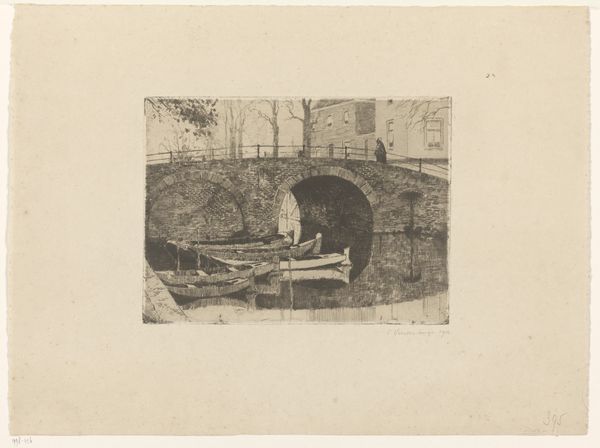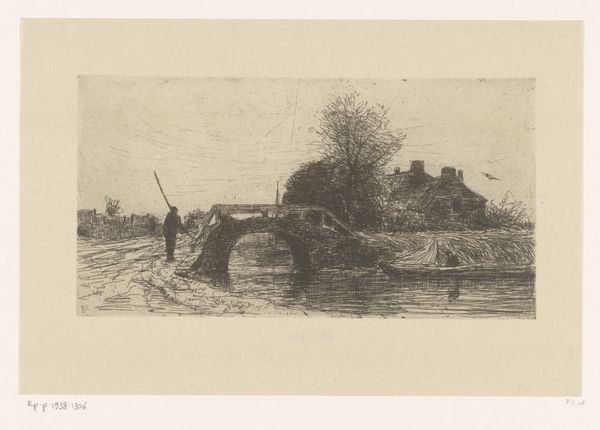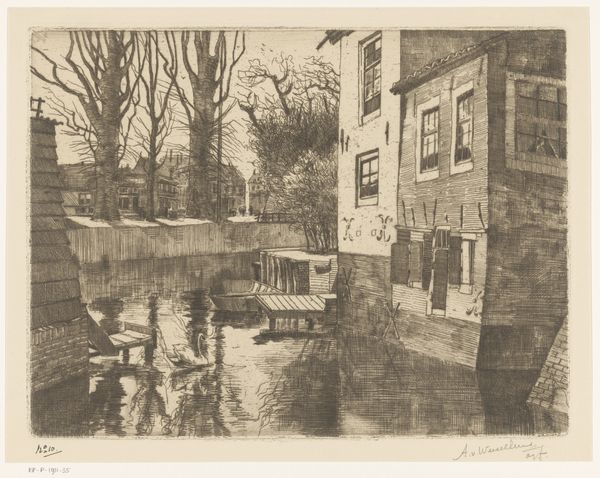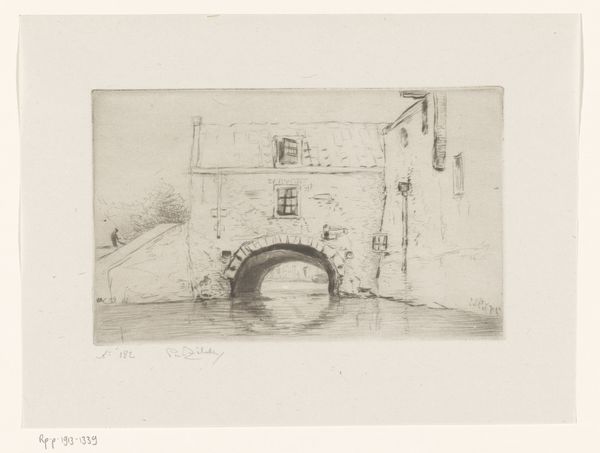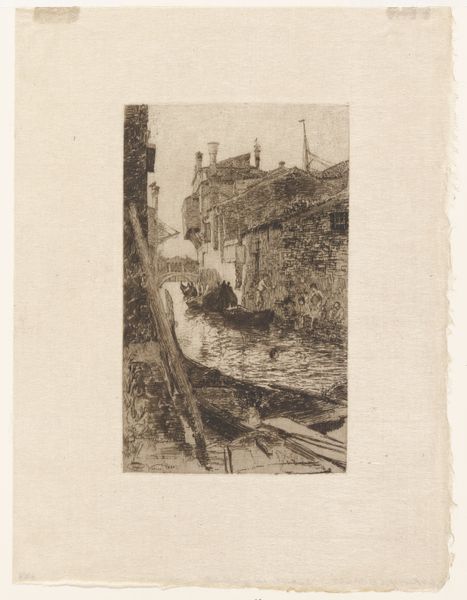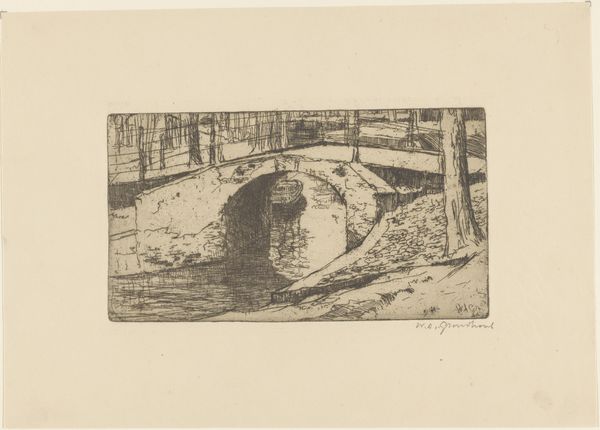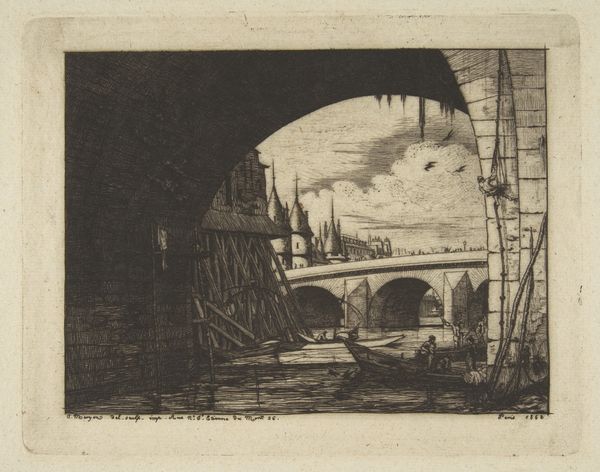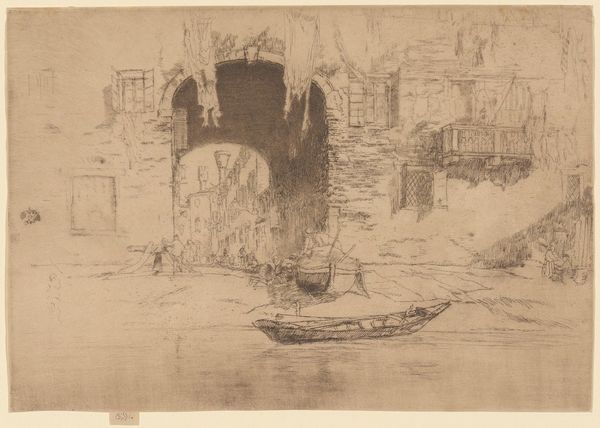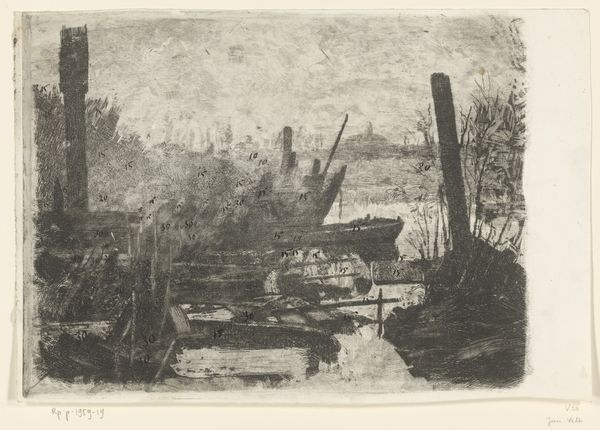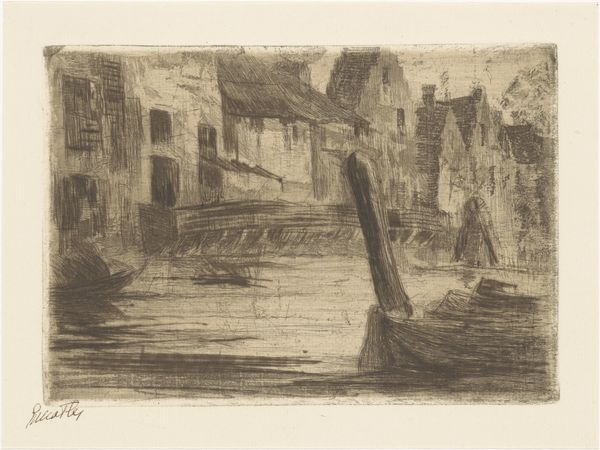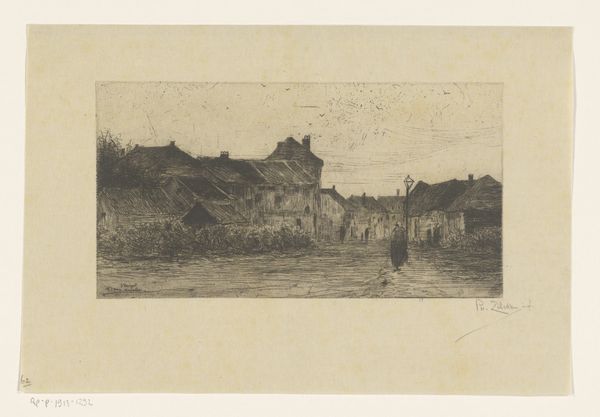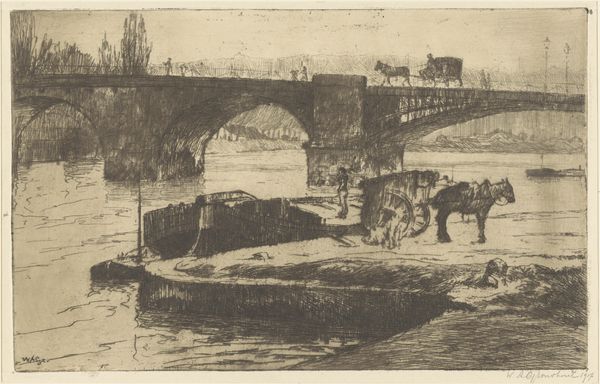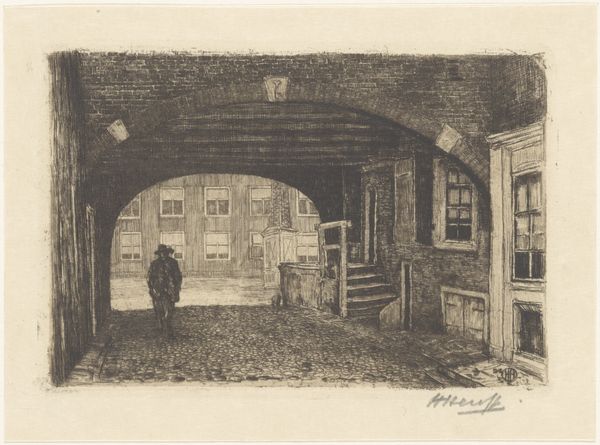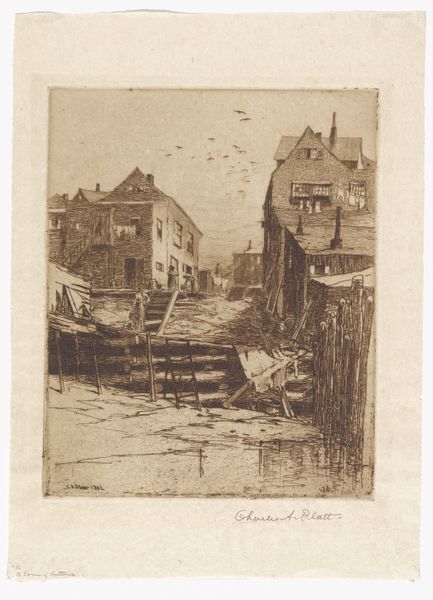
print, etching
#
aged paper
#
toned paper
#
light pencil work
# print
#
etching
#
landscape
#
cityscape
Dimensions: height 162 mm, width 194 mm
Copyright: Rijks Museum: Open Domain
Editor: Here we have Cornelis Vreedenburgh’s 1914 etching, "Brug over een gracht," or "Bridge over a canal". The aged paper gives it such a wonderful, vintage feel, doesn’t it? What strikes me most is how much detail he manages to achieve with what appears to be a fairly light pencil work, especially with all the buildings, brick, and boat reflections in the water. What do you make of it? Curator: What intrigues me here is Vreedenburgh’s conscious engagement with printmaking. It isn’t simply a reproductive medium for painting, it is the focus itself. Note the intense hatching of the etcher's needle; this technique gives form to this representation. Are these readily available, inexpensive materials, meant to appeal to the rising urban middle class? Does this location appear generic, reproducible in many locations? Is this work trying to represent and appeal to the broadest number of people? Editor: I suppose that could be the case, yeah, and now that I’m considering the details like the aged paper, it’s neat how Vreedenburgh uses relatively cheap and reproducible processes to make what appears to be accessible imagery, even a bit drab? So no appeal to the wealthy and elite. Curator: Exactly. Consider also how the printmaking process, involving acid and metal plates, inherently alters the artist's hand. Does this distancing affect its aura as fine art? This almost industrialized, reproduced feel might make this artwork available to broader social echelons, who work industrially themselves. Does the print form act as a subtle promotion of social change, an appreciation for the urban experience divorced from luxury and status? Editor: Wow, I didn't think about the social implications of the medium like that, about making art accessible to the average consumer through its mass reproducibility! I'm now seeing the boats as tools to connect and interact with the landscape, instead of, well, objects in the background! Curator: Yes. By understanding the materials and means of production, we move beyond purely aesthetic interpretations. It transforms our appreciation, doesn’t it?
Comments
No comments
Be the first to comment and join the conversation on the ultimate creative platform.
